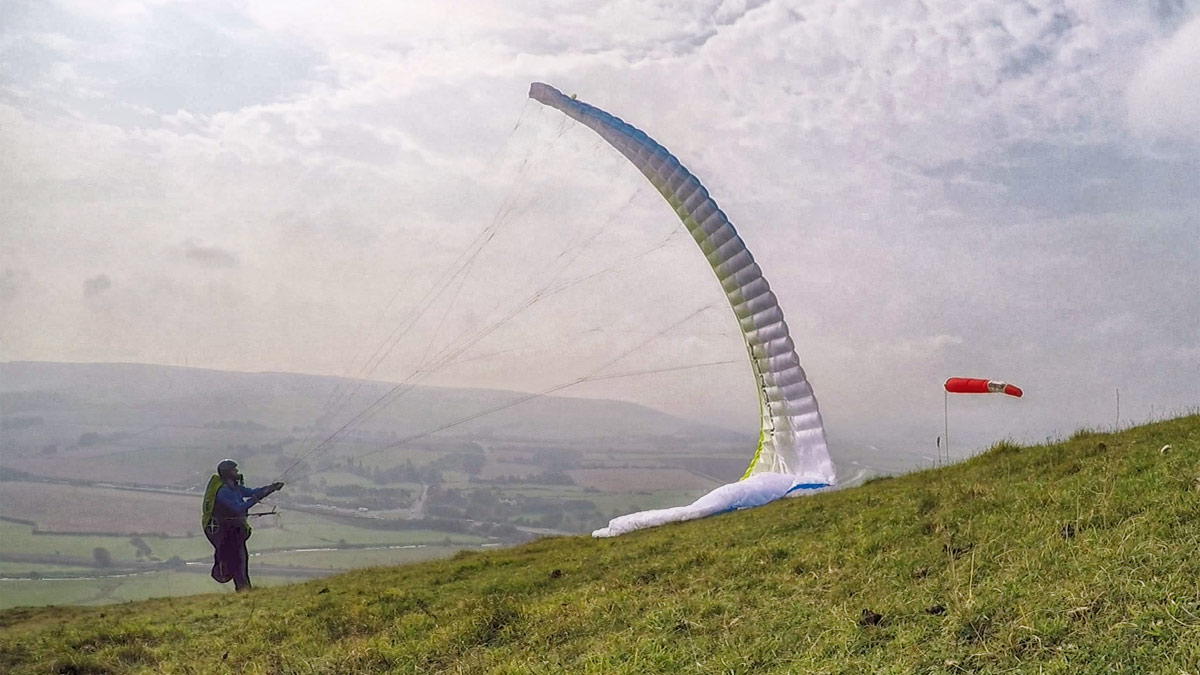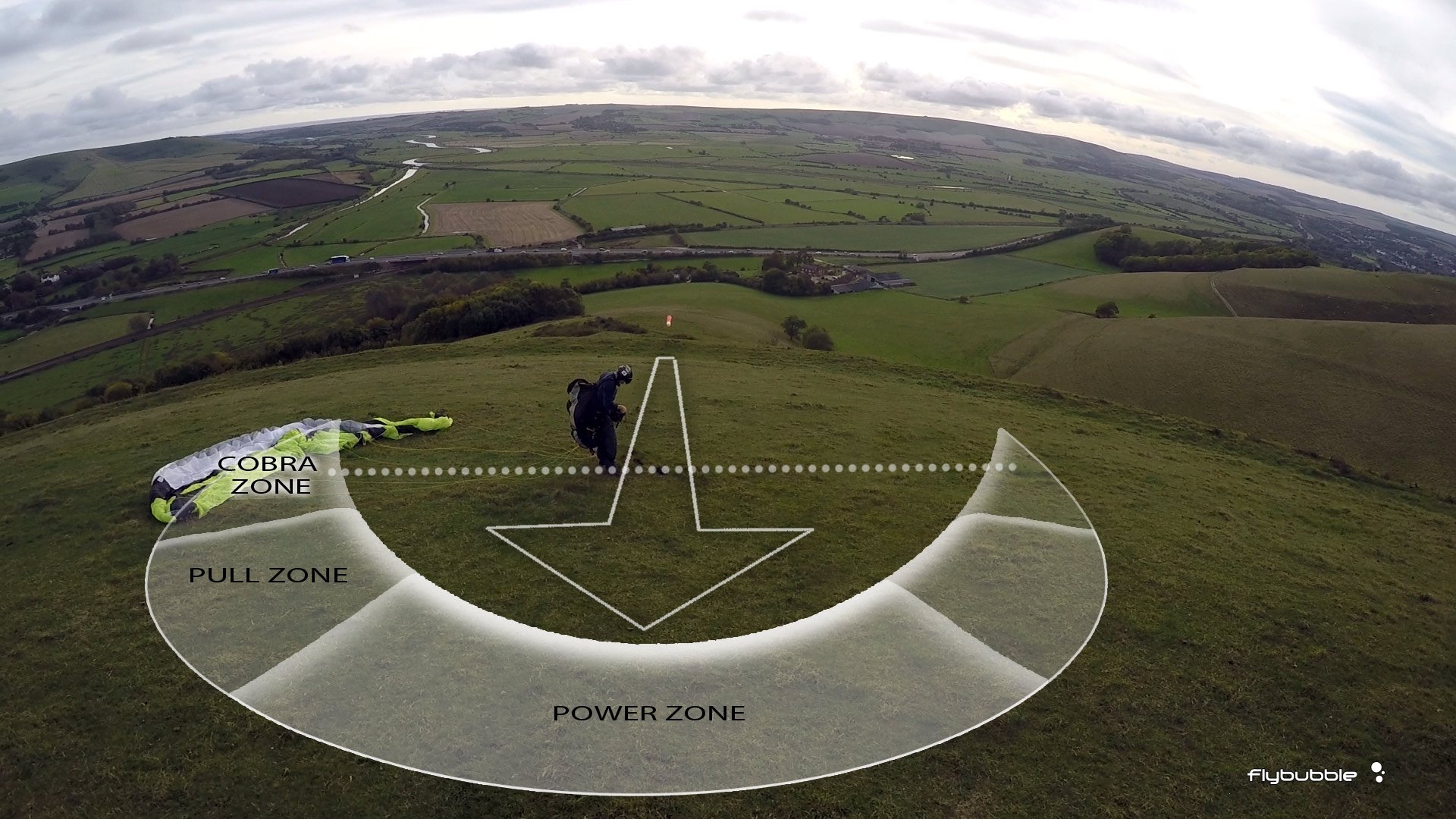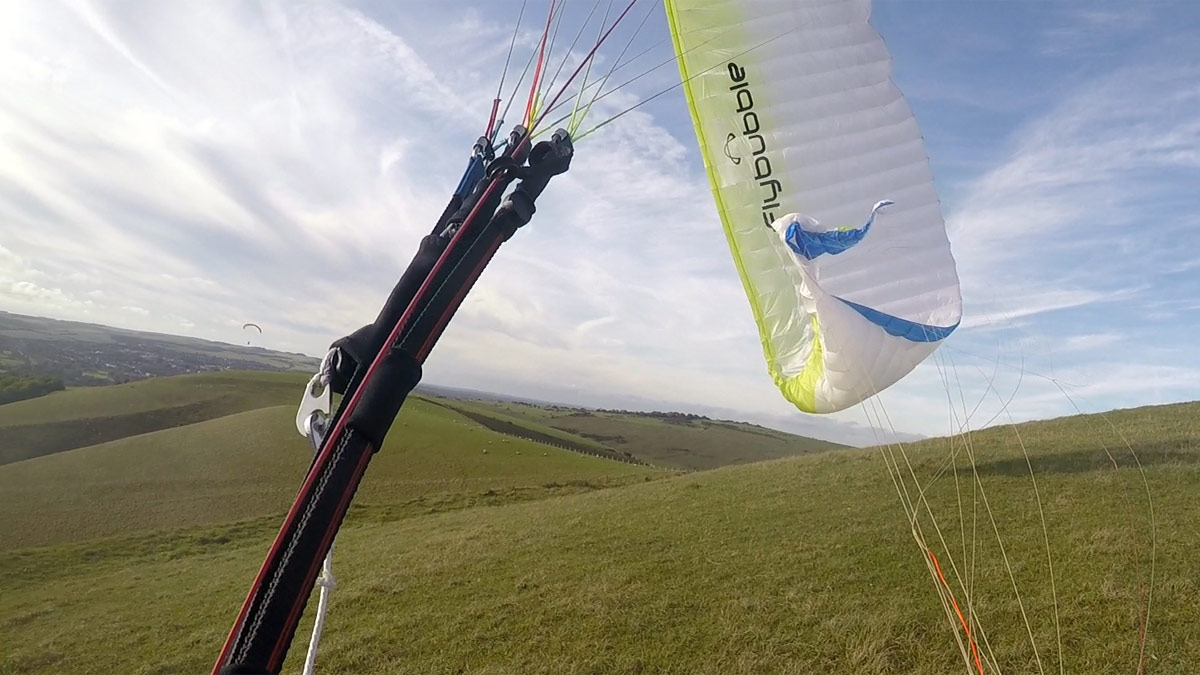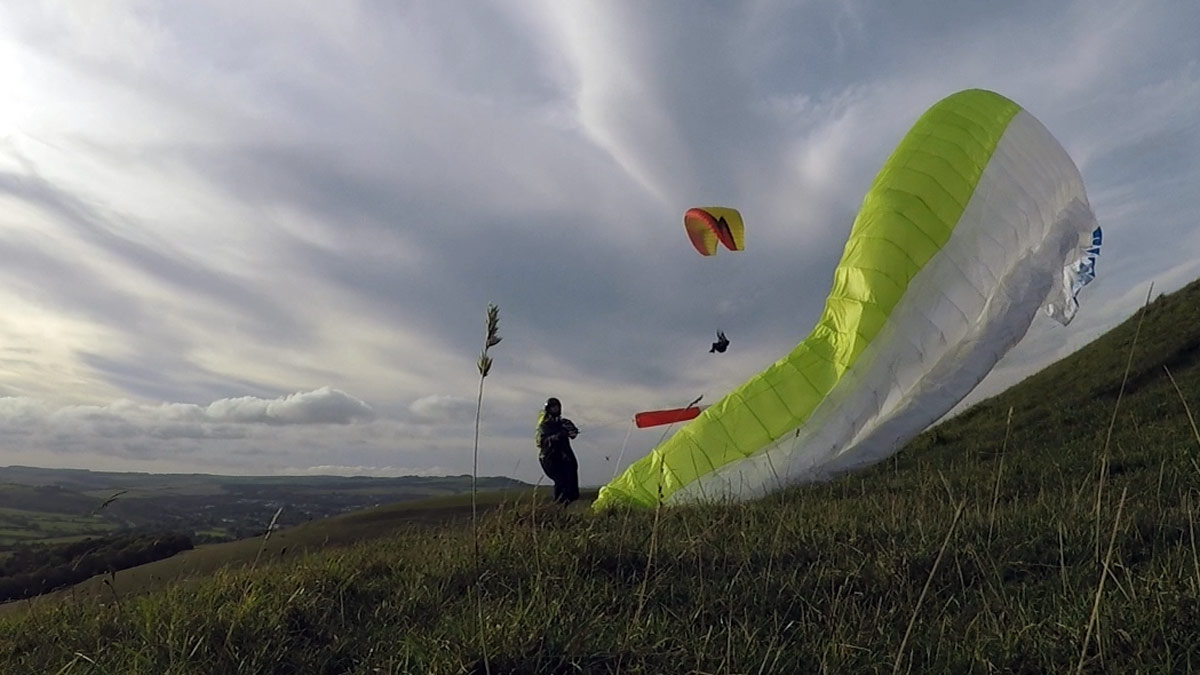
The Cobra Launch is an alternative launch technique for moderate to strong wind. It works by pulling the wing up from a crosswind position relative to the pilot, so the pull force is reduced. In this article we analyse the setup and control required for a successful Cobra Launch.
It's useful to play around with this technique to develop glider control. Do this on a grassy site because when you're learning you're going to drag your glider all over the place.
Cobra launch power zones
Firstly, establish what the wind direction is and identify where you need to place the wing to avoid the power zone. The power zone is where you would normally place your wing, and is the only option for light winds (where the Cobra becomes more of an exercise in Limp Lettuce Wrangling).

To either side of the power zone is a pull zone, where the wing will still generate a lot of force and will pull the pilot across the launch site. The cobra zone is upwind of that position, where the wing will most likely remain uninflated unless it can be teased up so the cell openings are pointing into wind. The aerofoil will generate a horizontal force in this position but due to the tiny portion of the wing that begins flying the force is small.
One of the big disadvantages of the Cobra is that when you're setting the wing up it's usually from a bunched position, which means a lot of tangles in the lines, so you've got to clear those first, because you’re not going to have the pressure of building a wall that helps to identify tangles. It’s best to lay the wing out parallel to the wind and then bunch it carefully up, leaving just a short section of the downwind wingtip exposed. The best chance you have for a clean Cobra launch is during your first launch, when the wing is still nicely concertina folded and laid on its side.
Using the As and brakes (or easier, As and Cs) on just the downwind half of the wing, you can guide the tip upwards while keeping the bulk of the uninflated wing at the edge of the wind window. Aim to keep the wingtip standing upright (like a Cobra). It’s best to explain this visually
Cobra launch cravattes
Wings respond differently to this technique, so practice until you can avoid big cravattes. These happen because the uninflated wing fabric blows through the lines. If you have an assistant they can ‘feed the wing’ into the Cobra, which helps. You can sometimes pull your stabilo line to clear the cravatte, but it’s difficult while trying to balance the wing and avoid obstacles.
Herein lies the big risk with Cobra launching in strong wind. If you get a cravatte it will drag the wing back into the ‘pull zone’ and then you’ll be running after the wing. So work on it until you can be certain your chosen setup won’t produce a cravatte. This is why I don’t use this technique in critical launch situations, where building a wall and keeping it pinned using the back risers seems to work on most wings in most situations.

Cobra Launch Variation: Semi cobra
Walking around a fully inflated wing (a wall) and letting it launch from the side produces a semi-cobra effect, where some of the power is removed from the launch. It can still pull quite hard on some wings, yanking you downwind past an accelerating wing. Again, practice is essential to become familiar with the dynamics before venturing onto a critical launch site. Some tandem pilots use this method to reduce launch power, often combined with positioning the wing so it pulls uphill.

Cobra Launch: in summary
It is best suited to situations where the launch site is grassy (so you don’t tear your wing), where the wind is steady (delicate control is needed to tease the wing up) and strong. Turbulence is likely to collapse the lower wingtip due to the low angle of attack, so it’s not the best technique for thermic conditions or rocky ridges. If you get a cravatte it can be very dangerous on a windy launch, throwing the wing into a ‘lockout turn’ which is almost impossible to fix.
Because of these limitations, I don't recommend it as a strong wind launch technique but your glider might respond well to it, so it's worth playing around with. It is a variation that gives you less power and less pull but given the disadvantages in all conditions on all sites, I'm sticking with the standard launch of getting the glider open first and pulling it up straight.
